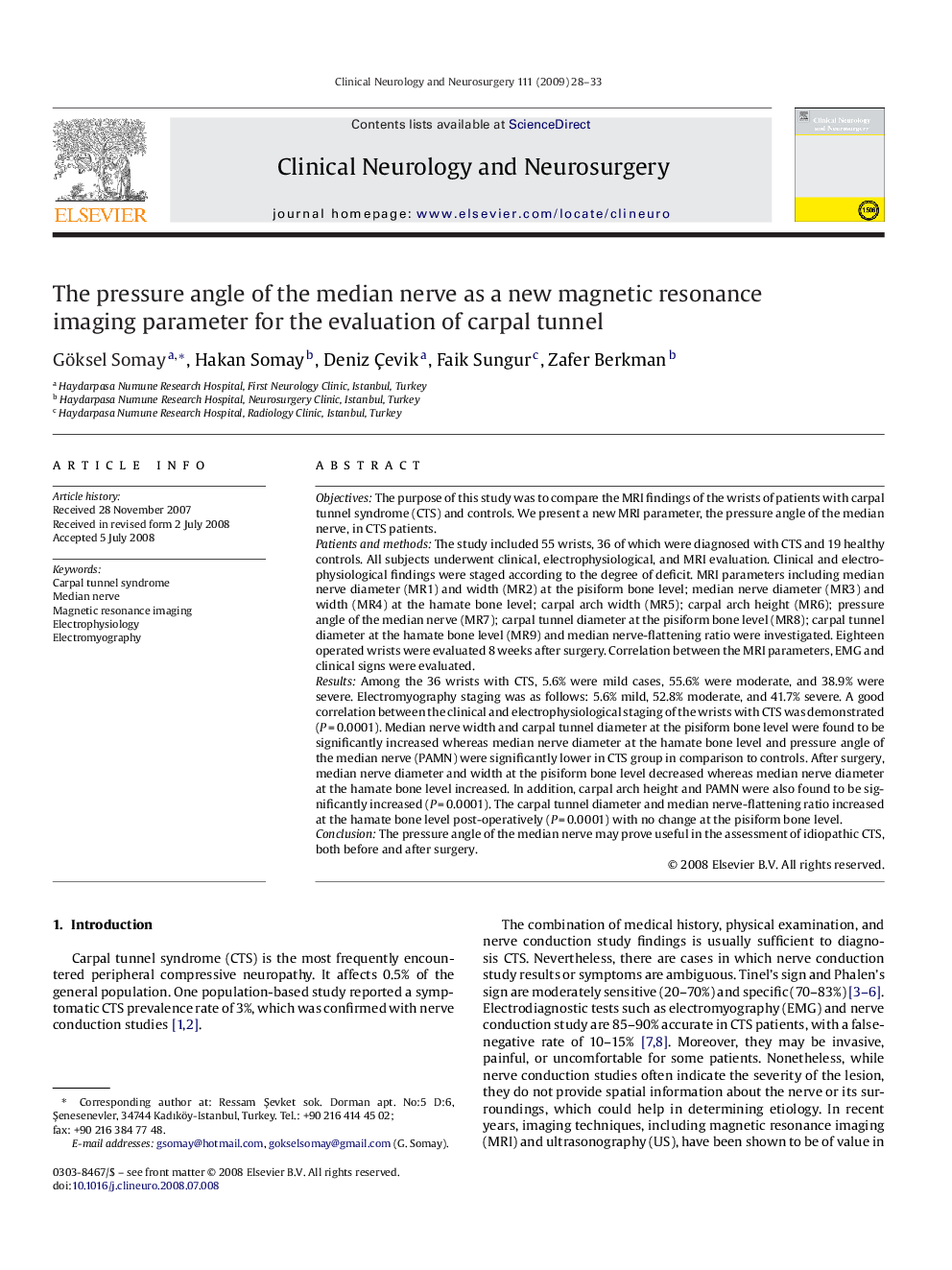| کد مقاله | کد نشریه | سال انتشار | مقاله انگلیسی | نسخه تمام متن |
|---|---|---|---|---|
| 3041436 | 1184776 | 2009 | 6 صفحه PDF | دانلود رایگان |

ObjectivesThe purpose of this study was to compare the MRI findings of the wrists of patients with carpal tunnel syndrome (CTS) and controls. We present a new MRI parameter, the pressure angle of the median nerve, in CTS patients.Patients and methodsThe study included 55 wrists, 36 of which were diagnosed with CTS and 19 healthy controls. All subjects underwent clinical, electrophysiological, and MRI evaluation. Clinical and electrophysiological findings were staged according to the degree of deficit. MRI parameters including median nerve diameter (MR1) and width (MR2) at the pisiform bone level; median nerve diameter (MR3) and width (MR4) at the hamate bone level; carpal arch width (MR5); carpal arch height (MR6); pressure angle of the median nerve (MR7); carpal tunnel diameter at the pisiform bone level (MR8); carpal tunnel diameter at the hamate bone level (MR9) and median nerve-flattening ratio were investigated. Eighteen operated wrists were evaluated 8 weeks after surgery. Correlation between the MRI parameters, EMG and clinical signs were evaluated.ResultsAmong the 36 wrists with CTS, 5.6% were mild cases, 55.6% were moderate, and 38.9% were severe. Electromyography staging was as follows: 5.6% mild, 52.8% moderate, and 41.7% severe. A good correlation between the clinical and electrophysiological staging of the wrists with CTS was demonstrated (P = 0.0001). Median nerve width and carpal tunnel diameter at the pisiform bone level were found to be significantly increased whereas median nerve diameter at the hamate bone level and pressure angle of the median nerve (PAMN) were significantly lower in CTS group in comparison to controls. After surgery, median nerve diameter and width at the pisiform bone level decreased whereas median nerve diameter at the hamate bone level increased. In addition, carpal arch height and PAMN were also found to be significantly increased (P = 0.0001). The carpal tunnel diameter and median nerve-flattening ratio increased at the hamate bone level post-operatively (P = 0.0001) with no change at the pisiform bone level.ConclusionThe pressure angle of the median nerve may prove useful in the assessment of idiopathic CTS, both before and after surgery.
Journal: Clinical Neurology and Neurosurgery - Volume 111, Issue 1, January 2009, Pages 28–33